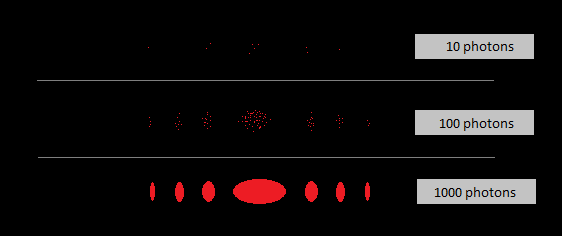When molecules consisting of as many as 114 atoms were used in a recently performed double slit experiment, the only explanation presented for the detected self interference pattern was that the molecules had in fact passed through both slits. This is after all what classic quantum mechanics tells us.
But is it really credible that a molecule consisting of so many atoms can pass through two slits at once? Wouldn't that cut the molecule in two? Or are we to believe that regular physics has to be abandoned for all things not directly observed?
Why not use the much more plausible explanation that the molecules did not travel alone through space, but rather through a medium, and that it was this medium that passed through both slits. The medium interfered with itself. It produced a standing wave pattern that guided the individual molecules to the detector at the far wall.
Using this explanation, each molecule arrives at the detector as a particle, producing a single imprint. When many enough molecules are used, a pattern arises that is directly proportional to the size of the particles. Large particles produce tight patterns. Small particles produce wide patterns.
 |
| Interference pattern |
The pattern is due to the wavelength of the ether, itself most likely made up of a mix of neutrinos and zero-energy photons. The two particles making up the ether interfere with each other to produce the standing wave, which in turn interfere with larger particles in the manner observed in the double slit experiment.
Particles themselves do not have wavelength. They have size. What the double slit experiment shows us is the size of particles relative to the ether. It is thus a way to measure the relative size of particles.
Particles themselves do not have wavelength. They have size. What the double slit experiment shows us is the size of particles relative to the ether. It is thus a way to measure the relative size of particles.
No comments:
Post a Comment